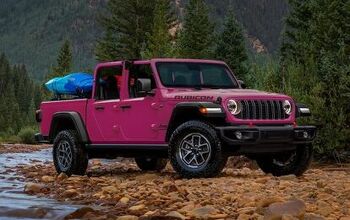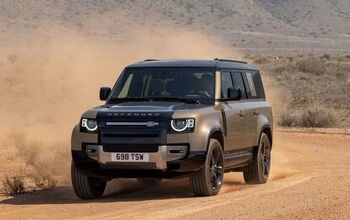Australia Building Electric Highway Even Though Nobody There Owns An Electric Car

Australia’s Queensland Cabinet announced it would be constructing one of the longest electric highways in the world this week. The expanse of roadway already exists on the country’s eastern seaboard, but the $3 million plan intends to add an 18-station network between Gold Coast and Cairns. While EV owners might not want to hazard into the outback just yet, coastal drivers will have some peace of mind traveling between Australia’s major towns.
The fast-charging network plans to provide free power for at least a year in what the environment minister, Steven Miles, explained was a bid to increase the number of electric cars on Queensland roads.
“This project is ambitious, but we want as many people as possible on board the electric vehicle revolution, as part of our transition to a low emissions future,” Miles said during the project’s announcement.
Australia intends to finish its “electric highway” within six months and compared it to the scale of California’a own “west coast green highway.” Although, there are some massive differences between the U.S. and the Land Down Under in terms of EV ownership. Australians have largely shunned electric vehicles. It’s estimated that total EV sales for the country, between 2010 and 2017 haven’t yet surpassed 5,000 units, despite the growing popularity of non-plug-in hybrids. Meanwhile, the State of California accounted for almost 250,000 plug-in deliveries between 2011 and the tail-end of 2016.
Granted, California does possess a higher overall population and an enviable charging network. But even less populous U.S. states, like Florida, surpass Australian EV sales by a margin of over 4-to-1. And there is worse news, Aussie plug-in sales have suffered a 90 percent drop after Nissan and Mitsubishi pulled the Outlander P-HEV and Nissan Leaf off of the market last year.
“The most recent Queensland Household Energy Survey showed that 50% of Queenslanders will consider an electric vehicle, plug-in hybrid or regenerative braking hybrid, when purchasing a new car in the next two years and that majority said improvements to public fast-charging infrastructure would further tempt them into purchasing an EV,” Miles stated. “The future truly is electric.”
It, assuredly, could be. But, with so few PEV options within the Australian marketplace, it’s difficult to imagine consumers actually succumbing to the implied temptation right away. With Japan’s heaviest hitters off the table, consumers are left with the Mercedes-Benz C350e and Tesla Model S as the country’s most popular options. But neither offer the affordability of Chevrolet’s Bolt, which isn’t expected to make it Australia anytime soon.
However, this hasn’t stopped the plan from receiving praise from the government or automakers hoping to sell EVs — like Audi, BMW, Hyundai, Jaguar Land Rover, Mercedes-Benz and Mitsubishi.
Behyad Jafari, chair of Australia’s Electric Vehicle Council said the Queensland Government was to be commended for its national leadership and supporting the electric vehicle industry. “I encourage all governments across Australia to follow suit, particularly as this support will help to provide motorists with increased choice of cars that are cheaper and healthier to operate.”
[Image: Bluedeviation/ Flickr ( CC BY-ND 2.0)]

A staunch consumer advocate tracking industry trends and regulation. Before joining TTAC, Matt spent a decade working for marketing and research firms based in NYC. Clients included several of the world’s largest automakers, global tire brands, and aftermarket part suppliers. Dissatisfied with the corporate world and resentful of having to wear suits everyday, he pivoted to writing about cars. Since then, that man has become an ardent supporter of the right-to-repair movement, been interviewed on the auto industry by national radio broadcasts, driven more rental cars than anyone ever should, participated in amateur rallying events, and received the requisite minimum training as sanctioned by the SCCA. Handy with a wrench, Matt grew up surrounded by Detroit auto workers and managed to get a pizza delivery job before he was legally eligible. He later found himself driving box trucks through Manhattan, guaranteeing future sympathy for actual truckers. He continues to conduct research pertaining to the automotive sector as an independent contractor and has since moved back to his native Michigan, closer to where the cars are born. A contrarian, Matt claims to prefer understeer — stating that front and all-wheel drive vehicles cater best to his driving style.
More by Matt Posky
Latest Car Reviews
Read moreLatest Product Reviews
Read moreRecent Comments
- Theflyersfan With sedans, especially, I wonder how many of those sales are to rental fleets. With the exception of the Civic and Accord, there are still rows of sedans mixed in with the RAV4s at every airport rental lot. I doubt the breakdown in sales is publicly published, so who knows... GM isn't out of the sedan business - Cadillac exists and I can't believe I'm typing this but they are actually decent - and I think they are making a huge mistake, especially if there's an extended oil price hike (cough...Iran...cough) and people want smaller and hybrids. But if one is only tied to the quarterly shareholder reports and not trends and the big picture, bad decisions like this get made.
- Wjtinfwb Not proud of what Stellantis is rolling out?
- Wjtinfwb Absolutely. But not incredibly high-tech, AWD, mega performance sedans with amazing styling and outrageous price tags. GM needs a new Impala and LeSabre. 6 passenger, comfortable, conservative, dead nuts reliable and inexpensive enough for a family guy making 70k a year or less to be able to afford. Ford should bring back the Fusion, modernized, maybe a bit bigger and give us that Hybrid option again. An updated Taurus, harkening back to the Gen 1 and updated version that easily hold 6, offer a huge trunk, elevated handling and ride and modest power that offers great fuel economy. Like the GM have a version that a working mom can afford. The last decade car makers have focused on building cars that American's want, but eliminated what they need. When a Ford Escape of Chevy Blazer can be optioned up to 50k, you've lost the plot.
- Willie If both nations were actually free market economies I would be totally opposed. The US is closer to being one, but China does a lot to prop up the sectors they want to dominate allowing them to sell WAY below cost, functionally dumping their goods in our market to destroy competition. I have seen this in my area recently with shrimp farmed by Chinese comglomerates being sold super cheap to push local producers (who have to live at US prices and obey US laws) out of business.China also has VERY lax safety and environmental laws which reduce costs greatly. It isn't an equal playing field, they don't play fair.
- Willie ~300,000 Camrys and ~200,000 Accords say there is still a market. My wife has a Camry and we have no desire for a payment on something that has worse fuel economy.


































Comments
Join the conversation
If you build it, Elon Musk and other government-money-chasers will come.
The more socialist markets like in the EU, US, Canada Wow Big Al from Oz that's pretty brutal ! I knocked my Little Red Book off the coffee table when I read your comment.I'm sorry !